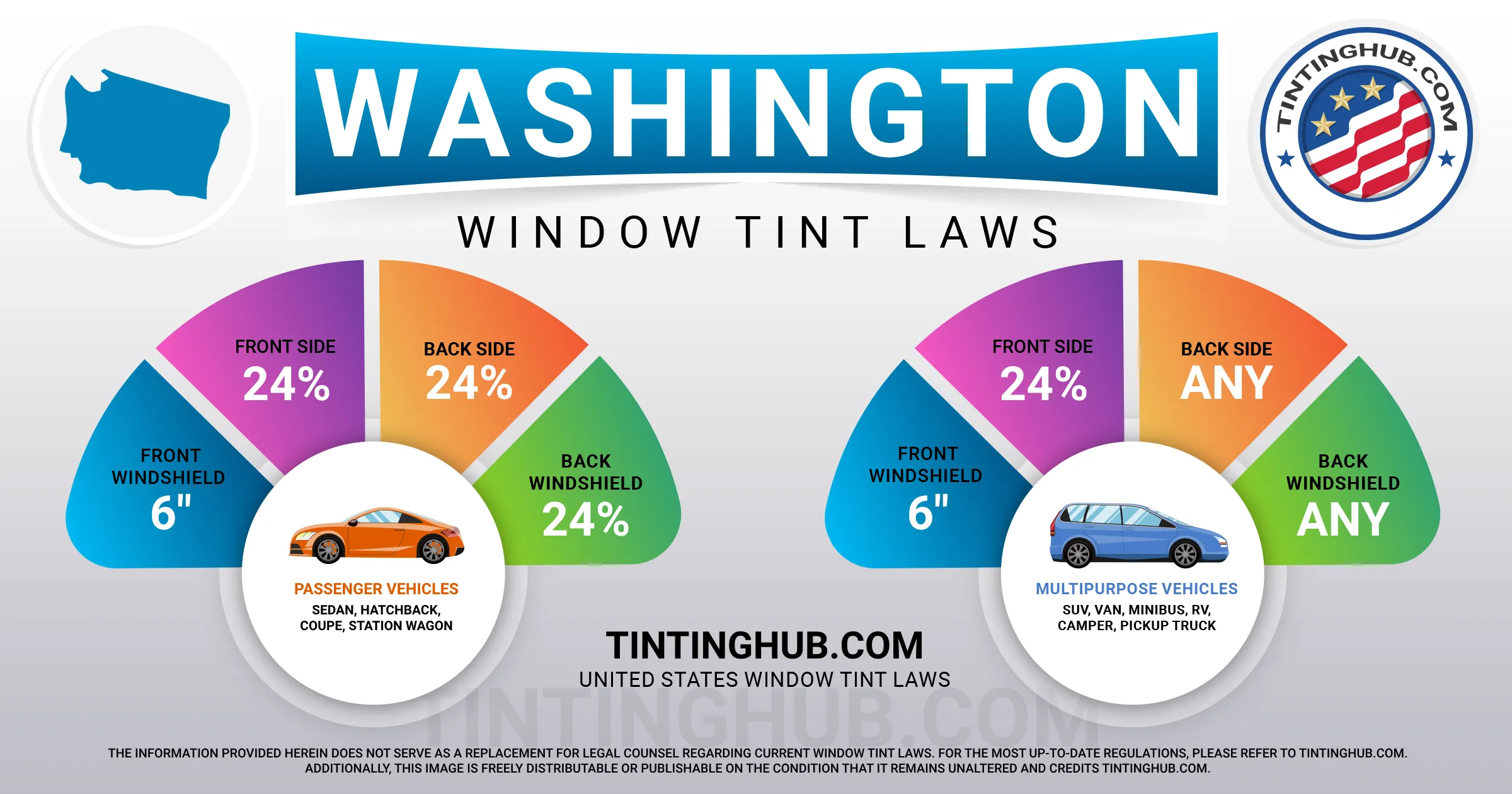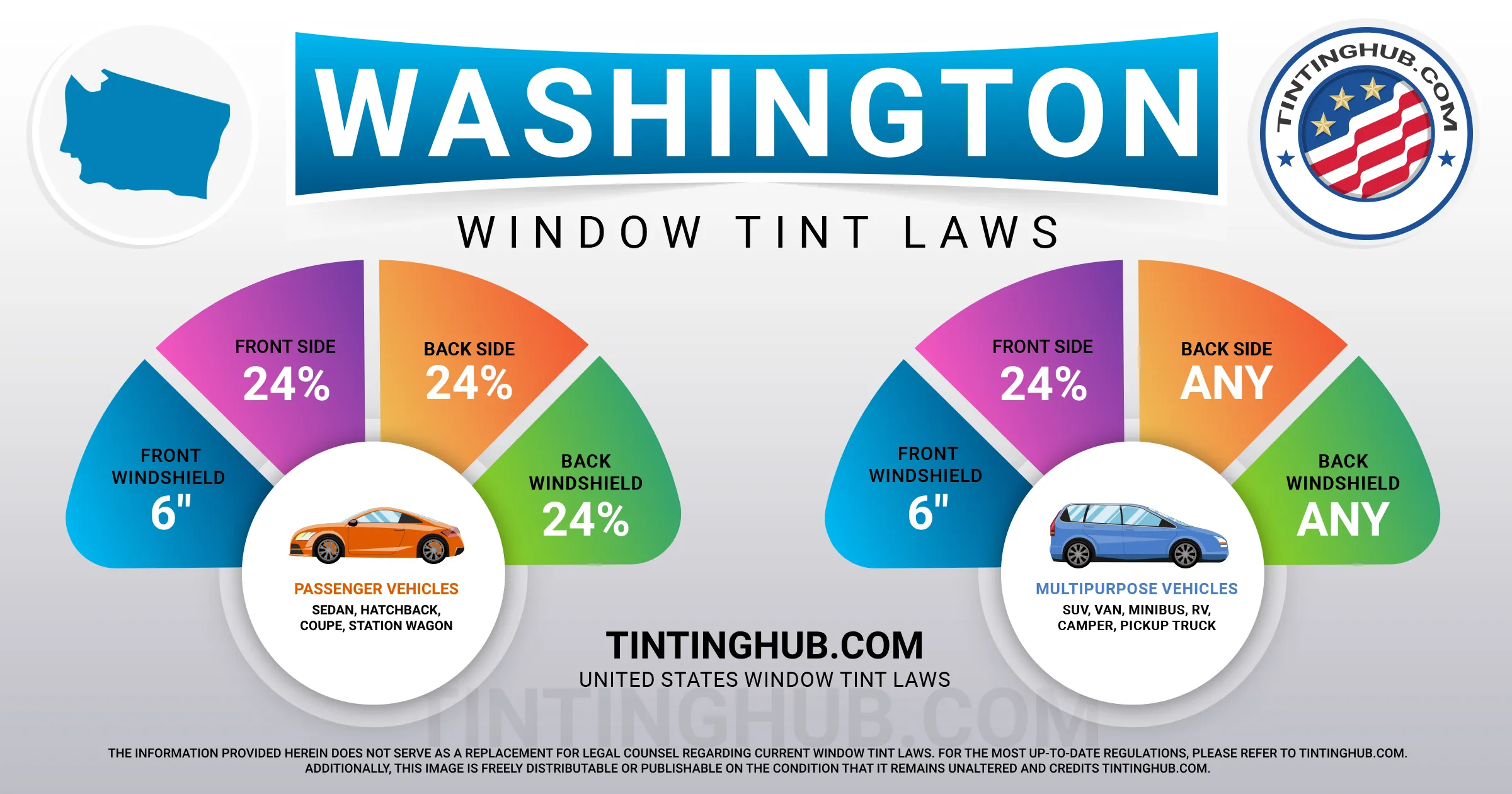Washington Window Tint Laws (Last Update 2024)

Car window tinting laws in Washington State have been in effect since 2011, ensuring the safety and comfort of drivers and passengers. In this comprehensive guide, we will provide you with all the essential information about Washington’s car window tinting laws, including the permissible tint darkness and reflection levels. Read on to ensure your vehicle complies with the regulations.

Window Tint Darkness in Washington
The amount of visible light that can pass through your car windows is referred to as Visible Light Transmission (VLT). Washington’s tint darkness regulations are quite specific and differ for sedan cars and SUVs or vans.
Tint Darkness for Sedans
Windshield:
Non-reflective tint is allowed on the top 6 inches of the windshield.
Front Side Windows:
These windows must allow more than 24% of light to pass through.
Back Side Windows:
The rear and back side windows must also allow more than 24% of light to pass through.
Tint Darkness for SUVs and Vans
Windshield:
Similar to sedans, non-reflective tint is allowed on the top 6 inches of the windshield.
Front Side Windows:
For SUVs and vans, the front side windows must allow more than 24% of light to pass through.
Back Side Windows:
Unlike sedans, there are no restrictions on the darkness of the back side windows for SUVs and vans.
Window Tint Reflection in Washington
Window tint can help reduce glare and heat by reflecting incoming light. However, Washington law places limits on how much light your tint can reflect.
Tint Reflection for Sedans
Front Side Windows:
The front side windows of sedans must not be more than 35% reflective.
Back Side Windows:
The back side windows of sedans also must not be more than 35% reflective.
Tint Reflection for SUVs and Vans
Front Side Windows:
Similar to sedans, front side windows of SUVs and vans must not be more than 35% reflective.
Back Side Windows:
The back side windows of SUVs and vans are subject to the same 35% reflection limit.
Other Washington Window Tint Rules and Regulations
In addition to darkness and reflection levels, there are other important laws and regulations regarding window tinting in Washington that you should be aware of:
Side Mirrors:
If the back window is tinted, dual side mirrors are required in Washington for added safety.
Restricted Colors:
Washington law prohibits the use of yellow, red, and amber window tints.
Certificates:
Film manufacturers must certify the film they sell in Washington. When getting your window tint, check with your dealer to ensure they are using certified film.
Stickers:
A sticker to identify legal tinting is required and should be placed between the film and glass on the driver’s side window.
Medical Exceptions:
Washington allows for medical exemptions for special tint, ensuring that those with medical conditions can still benefit from window tinting.
It’s essential to note that local DMV or law enforcement authorities may interpret Washington’s tinting laws and regulations differently in various counties or places of residence. We recommend double-checking the information to ensure compliance.
Please be aware that we last updated our information about window tint laws in Washington in 2024. If you find any discrepancies or need further clarification, don’t hesitate to reach out to us. We’re committed to providing accurate and up-to-date information to help you navigate Washington’s window tint regulations with confidence.